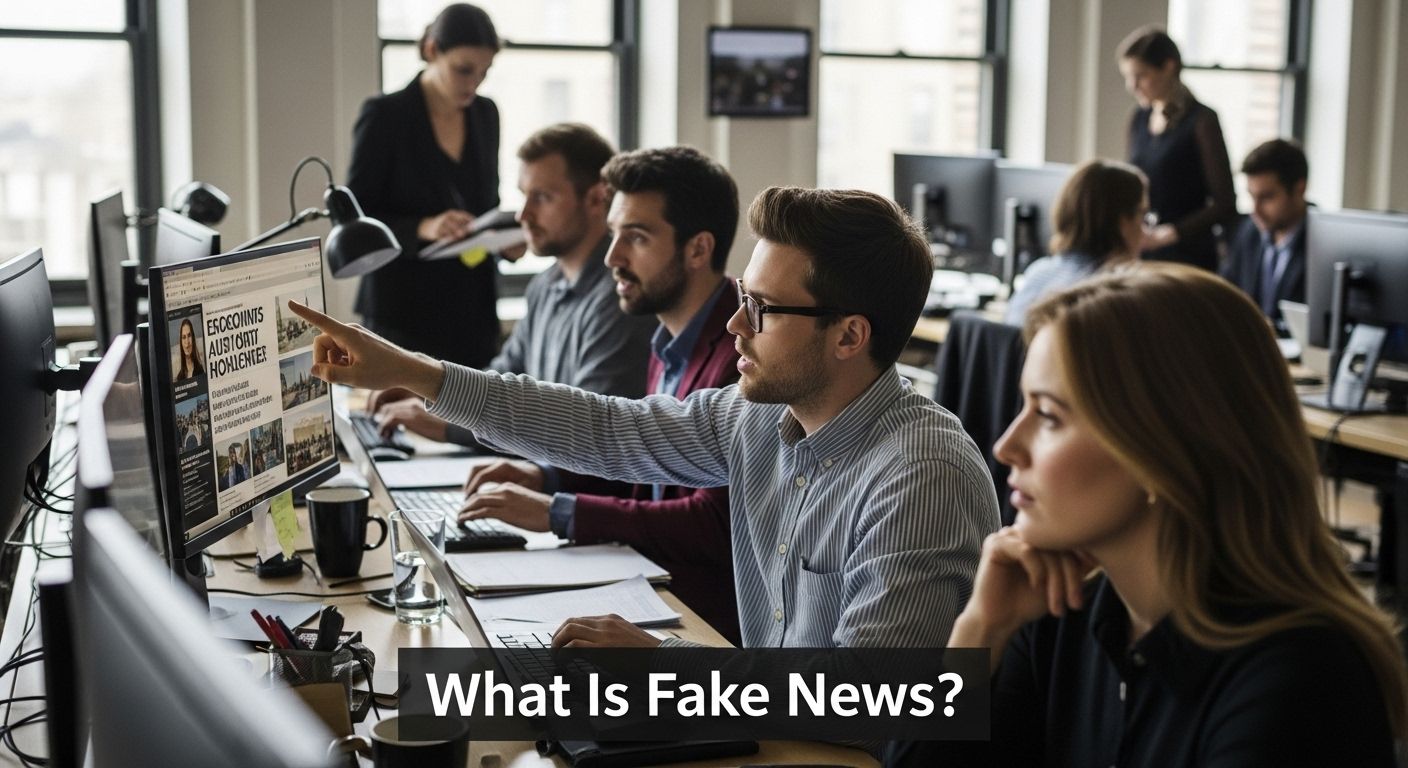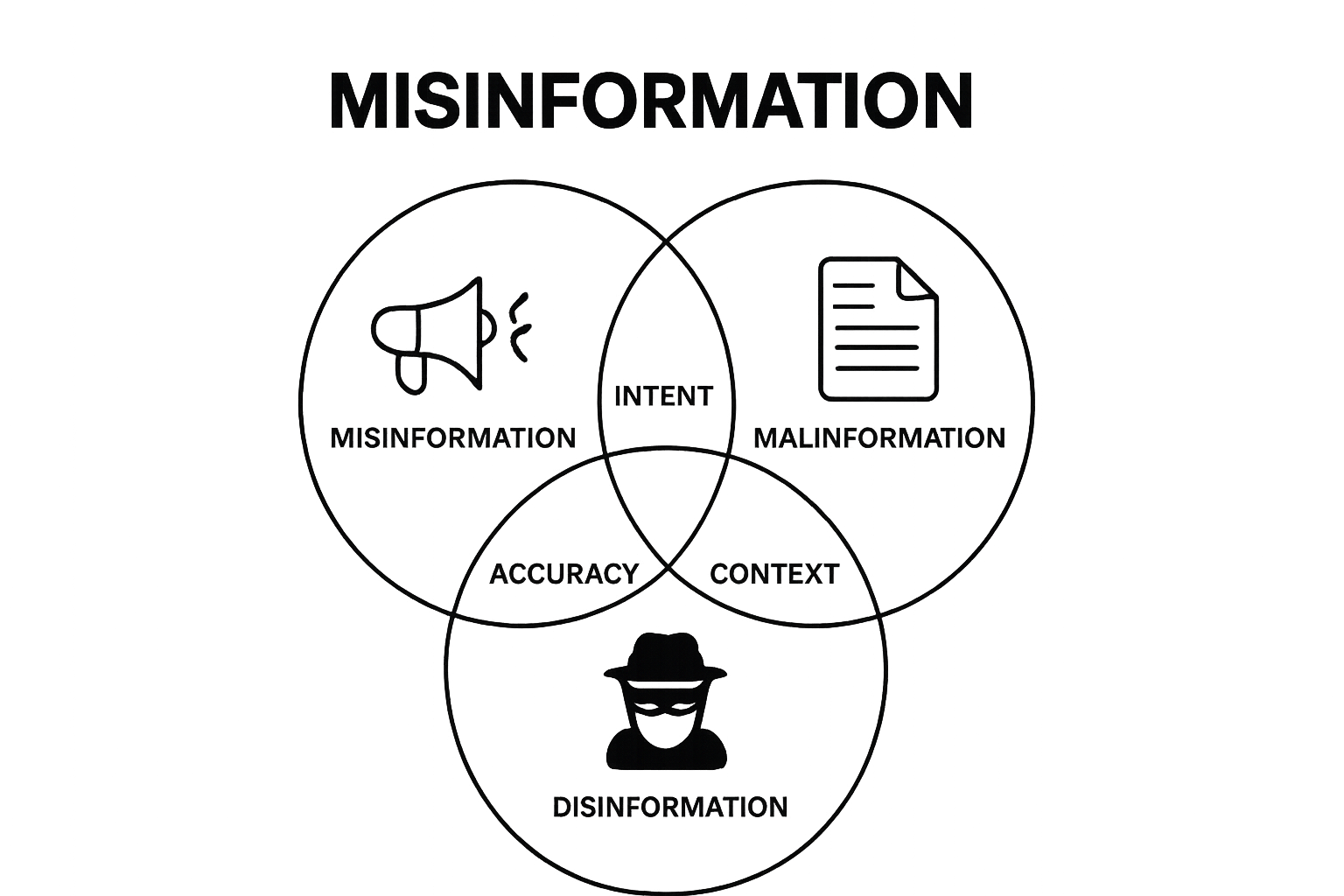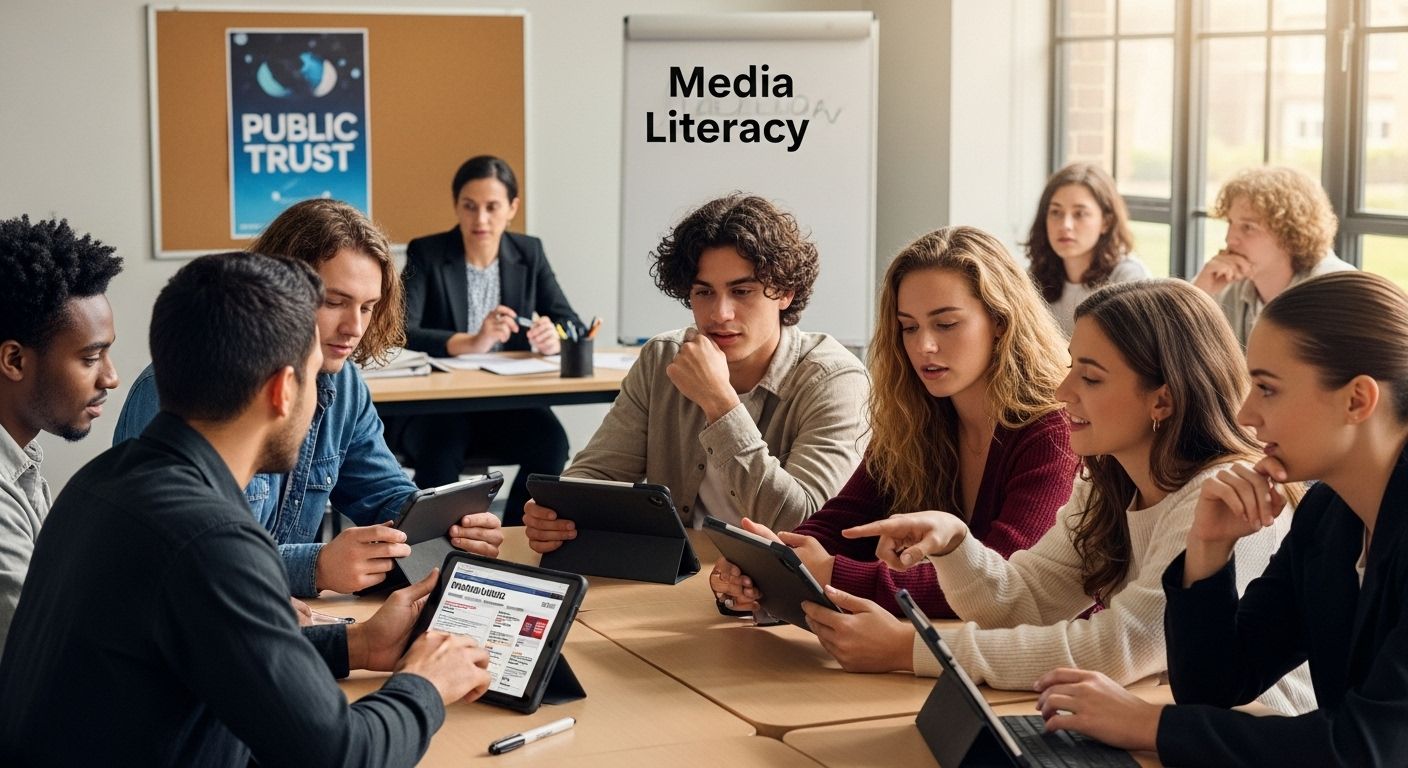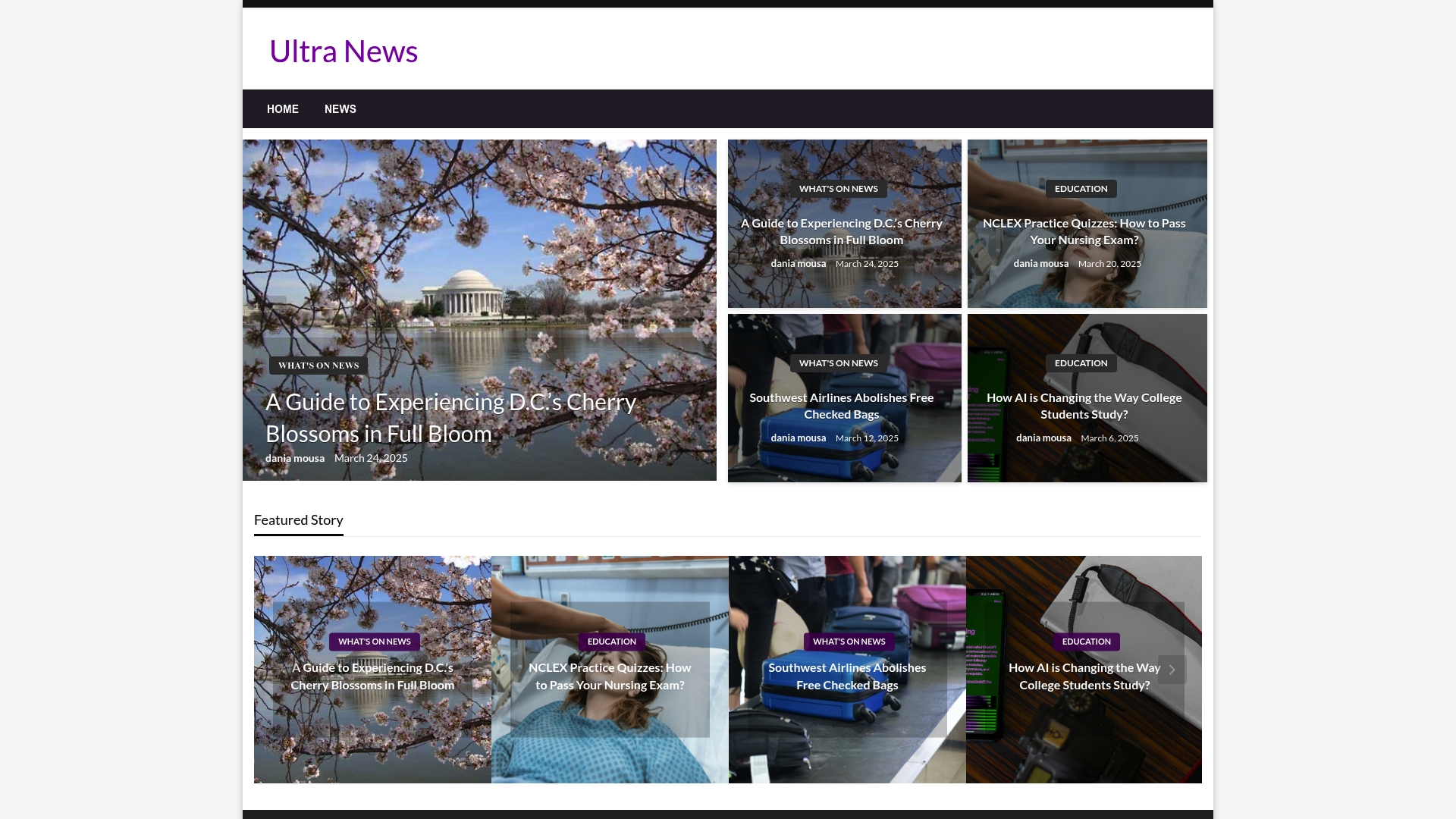
Fake news is everywhere and it often looks just like the real thing. Here is a wild fact. Over 60 percent of Americans have trouble distinguishing fake news from real news online. Most people think they can spot lies with ease. The truth is, fake news today is so sneaky that even experts sometimes get fooled.
Quick Summary
| Takeaway | Explanation |
|---|---|
| Distinguish between types of fake news | Understand the differences between disinformation, misinformation, and malinformation for better evaluation of content. |
| Look for sensationalized headlines | Be cautious of headlines designed to provoke emotional responses, as they often signal misleading information. |
| Seek credible sources and diversity | Cross-reference news across multiple reputable sources to ensure information accuracy and reduce bias. |
| Recognize psychological triggers | Awareness of emotional and cognitive biases can protect against sharing misleading content. |
| Cultivate media literacy skills | Developing critical thinking and fact-checking abilities is essential for navigating the complex information landscape today. |
Defining Fake News: Key Characteristics and Forms
Fake news represents a complex phenomenon that extends far beyond simple misinformation. At its core, fake news is deliberately fabricated information designed to mislead readers, often constructed to appear like legitimate news reporting. Understanding its nuanced characteristics helps individuals critically evaluate media consumption.
What Constitutes Fake News
According to Northeastern University, fake news encompasses three primary categories:
- Disinformation: Intentionally false content created to cause deliberate harm
- Misinformation: False content shared without malicious intent
- Malinformation: Genuine information strategically shared out of context to cause damage
These categories reveal that fake news is not a monolithic concept but a sophisticated communication strategy with varied motivations and potential impacts.
Below is a table comparing the three primary categories of fake news discussed in the article, summarizing their intent, core description, and impact.
| Category | Intent | Description | Potential Impact |
|---|---|---|---|
| Disinformation | Deliberate deception | Intentionally false content created to cause harm | Can sway opinions, harm reputation |
| Misinformation | Unintentional sharing | False content shared without a malicious purpose | Misinforms the public, spreads confusion |
| Malinformation | Malicious misuse of facts | Genuine information shared out of context to create damage | Damages trust, manipulates context |
 While traditional understanding might suggest fake news is simply fabricated stories, modern interpretations recognize its more intricate nature.
While traditional understanding might suggest fake news is simply fabricated stories, modern interpretations recognize its more intricate nature.
Identifying Fake News Characteristics
Recognizing fake news requires understanding its key characteristics. These often include:
- Sensationalized headlines designed to provoke emotional responses
- Lack of credible source attribution
- Use of manipulated or out-of-context imagery
- Absence of verifiable facts or supporting evidence
Professional fact-checkers and media literacy experts emphasize that fake news thrives on exploiting psychological vulnerabilities.
This table highlights common characteristics of fake news cited in the article, assisting readers in quickly identifying misleading or unreliable stories.
| Characteristic | Description |
|---|---|
| Sensationalized headlines | Designed to provoke strong emotional reactions |
| Lack of credible source attribution | Absence of reputable or identifiable news sources |
| Manipulated or out-of-context imagery | Use of altered photos or videos to mislead |
| Absence of verifiable facts | Lacks supporting evidence and fact-based details |
| Exploitation of psychological triggers | Leverages biases and emotions to encourage sharing |
For readers interested in developing better media discernment skills, check out our comprehensive guide on how to spot fake news.
The Importance of Recognizing Fake News in Today’s Society
News literacy has become a critical skill in our hyper-connected digital age, where information spreads rapidly and credibility can be challenging to verify. Recognizing fake news is no longer optional but a fundamental requirement for responsible citizenship and informed decision making.
Societal Impact of Misinformation
According to Brookings Institution, the consequences of unchecked fake news extend far beyond individual misunderstandings. Misinformation can significantly undermine democratic processes, erode public trust, and create dangerous social divisions.
The potential societal impacts include:
- Manipulation of public opinion during elections
- Erosion of trust in legitimate institutions
- Increased political polarization
- Potential incitement of social conflicts
Personal and Collective Responsibility
Recognizing fake news is a shared responsibility that requires active engagement from individuals, educational institutions, and media organizations. Critical thinking and media literacy are powerful tools against misinformation.
Key strategies for combating fake news involve:
- Developing strong fact-checking skills
- Seeking information from diverse, credible sources
- Understanding personal biases that make us vulnerable to misinformation
- Promoting digital literacy in educational systems
To enhance your understanding of credible information sources, learn more about identifying trustworthy news platforms.
How Fake News Spreads: Mechanisms and Platforms
Digital platforms have transformed the landscape of information dissemination, creating unprecedented opportunities for fake news to spread rapidly and extensively. Understanding these mechanisms is crucial for recognizing and mitigating misinformation’s potential harm.
Digital Amplification Techniques
According to National Institutes of Health research, fake news propagation involves sophisticated digital strategies that exploit human psychology and technological infrastructure. The primary mechanisms include:
- Algorithmic recommendation systems that prioritize engaging content
- Social media network effects that enable rapid sharing
- Targeted advertising techniques that direct misinformation to vulnerable audiences
- Automated bots that artificially inflate content visibility
Social media platforms serve as primary conduits for fake news transmission, where emotional and sensationalist content can spread exponentially faster than factual information. These platforms’ design inherently encourages quick sharing without critical evaluation.
Psychological Triggers of Misinformation Spread
The transmission of fake news is not merely a technological phenomenon but a complex interplay of psychological factors. Key psychological triggers include:
- Confirmation bias, where individuals share information that aligns with their existing beliefs
- Emotional resonance that makes sensational stories more shareable
- Limited attention spans that discourage thorough fact-checking
- Tribal social dynamics that prioritize group solidarity over factual accuracy
To better understand how digital platforms influence news consumption, explore our in-depth analysis of social media’s news impact. Recognizing these mechanisms empowers individuals to become more discerning consumers of digital information.
The Impact of Fake News on Public Perception and Policy
Fake news has emerged as a powerful force capable of fundamentally reshaping public understanding and governmental decision making. The consequences extend far beyond individual misinformation, potentially destabilizing institutional credibility and social trust.
Undermining Institutional Credibility
According to systematic research, fake news creates complex ripple effects across multiple societal domains. Institutional prestige becomes vulnerable when misinformation systematically erodes public confidence, challenging the fundamental mechanisms of democratic communication.
The primary areas of institutional impact include:
- Diminished public trust in government agencies
- Reduced effectiveness of public health communications
- Potential disruption of policy implementation processes
- Increased skepticism toward official information sources
Public Decision Making and Perception Shifts
Misinformation profoundly influences how individuals interpret complex social issues. Repeated exposure to fake news can fundamentally alter perception frameworks, creating alternate narratives that compete with factual information.
Key manifestations of perception manipulation include:
- Polarization of political and social viewpoints
- Resistance to expert recommendations
- Emotional rather than rational decision-making processes
- Increased vulnerability to manipulative narratives
To develop a deeper understanding of how media influences public perception, explore our comprehensive analysis of information dynamics. Recognizing these mechanisms is crucial for maintaining an informed and resilient democratic society.
Combatting Fake News: Tools and Strategies for Awareness
Digital literacy has become a critical defense mechanism against the proliferation of misinformation in our interconnected world. Developing robust strategies to identify, analyze, and counter fake news requires a multifaceted approach involving technological tools, educational resources, and individual critical thinking skills.
Technology and Verification Tools
According to RAND Corporation’s research, combatting fake news involves leveraging sophisticated technological solutions designed to enhance information verification. Digital platforms now offer increasingly advanced fact-checking mechanisms that help users distinguish between credible and misleading content.
Key technological strategies include:
- Automated fact-checking algorithms
- Image and video reverse search tools
- Browser extensions that flag potential misinformation
- AI-powered source credibility assessment systems
Personal Media Literacy Strategies
Effective fake news resistance goes beyond technological interventions and requires developing individual critical thinking capabilities. Cultivating a skeptical yet open mindset is crucial for navigating complex information landscapes.
Critical personal strategies involve:
- Cross-referencing information across multiple reputable sources
- Understanding personal cognitive biases
- Practicing deliberate, slow information consumption
- Developing skills to recognize emotional manipulation techniques
To enhance your media literacy skills and learn more about identifying reliable information sources, explore our comprehensive guide on trustworthy news platforms. Empowering yourself with knowledge is the most effective defense against misinformation.

Stay Ahead of Fake News with Ultra News
Are you struggling to separate real facts from misinformation in today’s overwhelming news landscape? Our article highlights just how easy it is for fake news to shape opinions and erode trust. We know your goal is to recognize misleading stories quickly and avoid falling for digital traps. Ultra News brings you trusted reporting and essential guides that help develop fact-checking skills. Start learning how to spot unreliable sources and protect yourself from sensational headlines.

Make informed choices now by exploring our comprehensive guide on identifying trustworthy news platforms and discover key strategies with our tips on spotting fake news. Visit Ultra News for curated news and educational tools that keep you one step ahead of online misinformation.
Frequently Asked Questions
What is fake news?
Fake news refers to deliberately fabricated information designed to mislead readers, often presented in the guise of legitimate news reporting. It encompasses disinformation, misinformation, and malinformation with various motivations and impacts.
How can I identify fake news?
Key characteristics of fake news include sensationalized headlines, lack of credible sources, manipulated imagery, and absence of verifiable facts. Being aware of these traits can help in spotting misinformation.
What are the social impacts of fake news?
Fake news can undermine democratic processes, erode trust in institutions, create social divisions, and manipulate public opinion, especially during elections.
What strategies can I employ to combat fake news?
Combating fake news requires fact-checking skills, seeking credible information sources, understanding personal biases, and promoting digital literacy. Utilizing technology like automated fact-checking tools can also be beneficial.




